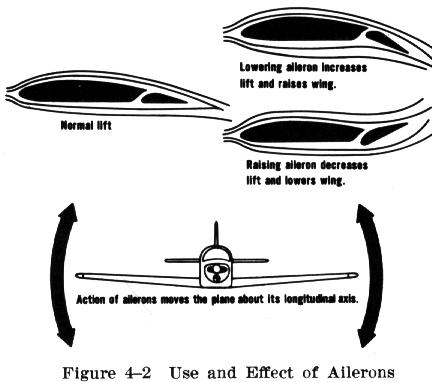| To demonstrate this in flight, an attempt can be made to turn to the
right without using the rudder pedals. As right aileron pressure is applied,
the airplane rolls into a right bank and tries to turn to the right. But
the adverse yaw, or the drag on the downward deflected left aileron, pulls
the airplane's nose to the left. The airplane banks, but it turns hesitantly
and sideslips. This is undesirable and corrective action should be taken
by applying right rudder pressure.
When right rudder pressure is applied simultaneously with
right aileron pressure, it keeps the airplane from yawing opposite to the
desired direction of turn. In fact, the rudder must be used because the
ailerons were used. Therefore, neither of those controls should be used
separately when making normal turns.
To minimize this undesirable effect (adverse yaw), many airplanes are
designed with differential type ailerons or Frise type ailerons. |
|


